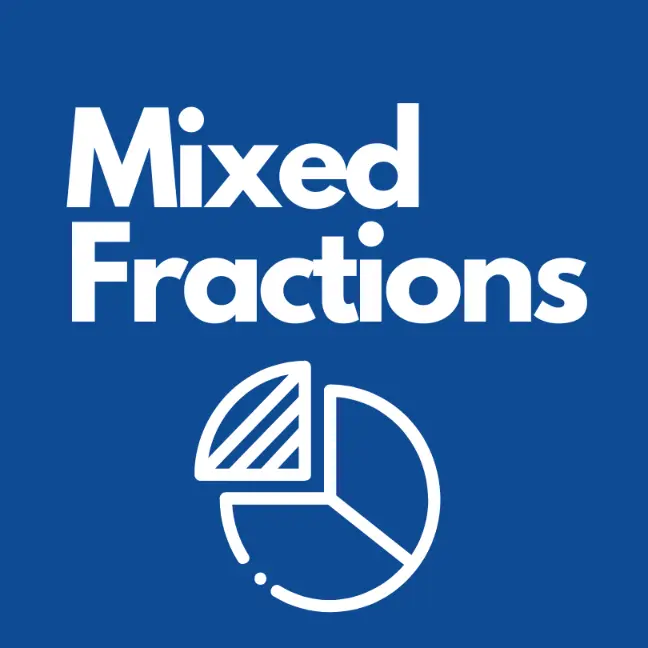Convert Mixed Number to Percentage
Enter a mixed number or fraction to convert to a percentage
Related Mixed Fraction Calculators
See all maths calculators
Mixed Number to % Calculator Guide
Converting mixed numbers to percentages is a fundamental mathematical skill with applications in various fields, from finance to everyday calculations. This comprehensive guide will walk you through the process of converting mixed numbers to percentages, provide you with practical examples, and offer insights into common mistakes and real-world applications.
Understanding Mixed Numbers
A mixed number is a combination of a whole number and a proper fraction. For example, 2 3/4 is a mixed number where 2 is the whole number part and 3/4 is the fractional part. Mixed numbers are commonly used in everyday life, such as in cooking measurements or when expressing quantities that are not whole numbers.
The Conversion Process: From Mixed Numbers to Percentages
Converting a mixed number to a percentage involves three main steps:
Step 1: Convert the Fraction to a Decimal
To begin, we need to convert the fractional part of the mixed number into a decimal. This is done by dividing the numerator by the denominator.
For example, in the mixed number 2 3/4:
3 ÷ 4 = 0.75
Step 2: Add the Whole Number to the Decimal
Next, we add the whole number part to the decimal we obtained in step 1.
Continuing our example:
2 + 0.75 = 2.75
Step 3: Convert the Decimal to a Percentage
The final step is to convert the resulting decimal to a percentage. This is done by multiplying the decimal by 100 and adding the percentage symbol.
Completing our example:
2.75 × 100 = 275%
Therefore, 2 3/4 as a percentage is 275%.
Examples of Mixed Number to Percentage Conversions
To better understand the process, let's look at a table of mixed number to percentage conversions:
| Mixed Number | Decimal Form | Percentage |
|---|---|---|
| 1 1/2 | 1.5 | 150% |
| 2 3/4 | 2.75 | 275% |
| 0 1/4 | 0.25 | 25% |
| 3 1/5 | 3.2 | 320% |
| 4 2/3 | 4.6666... | 466.67% |
| 1 7/8 | 1.875 | 187.5% |
Alternative Method: Converting to Improper Fractions
An alternative method for converting mixed numbers to percentages involves first changing the mixed number to an improper fraction. Here's how it works:
- Multiply the whole number by the denominator of the fraction.
- Add this result to the numerator.
- Place this sum over the original denominator.
- Divide the numerator by the denominator and multiply by 100 to get the percentage.
Let's use this method to convert 7 1/5 to a percentage:
- 7 × 5 = 35
- 35 + 1 = 36
- 36/5
- (36 ÷ 5) × 100 = 7.2 × 100 = 720%
This method can be particularly useful when dealing with complex fractions or when you prefer working with improper fractions.
Common Mistakes to Avoid
When converting mixed numbers to percentages, there are several common mistakes to be aware of:
-
Forgetting to add the whole number: Some people mistakenly convert only the fractional part to a percentage, forgetting to include the whole number.
-
Incorrect decimal placement: When converting the decimal to a percentage, it's crucial to move the decimal point two places to the right. Forgetting this step can lead to significant errors.
-
Rounding too early: For precise calculations, it's important to carry out the division to several decimal places before rounding.
-
Misinterpreting improper fractions: When dealing with improper fractions (where the numerator is larger than the denominator), remember that the result will be greater than 100%.
Practical Applications
Understanding how to convert mixed numbers to percentages has numerous real-world applications:
Finance and Investing
In finance, percentages are often used to express interest rates, returns on investments, or changes in stock prices. Being able to quickly convert between mixed numbers and percentages can be invaluable for financial analysis and decision-making.
Cooking and Baking
Many recipes use mixed numbers for ingredient measurements. Converting these to percentages can be useful when scaling recipes or comparing ingredient proportions.
Academic and Standardized Testing
Proficiency in converting between different numerical representations, including mixed numbers and percentages, is often tested in academic settings and standardized tests.
Data Analysis and Statistics
In data analysis, it's common to express proportions as percentages. The ability to convert mixed numbers to percentages can be crucial when interpreting and presenting data.
Using Technology: Mixed Number to Percentage Calculators
While it's important to understand the manual process, there are many online tools and calculators available that can quickly convert mixed numbers to percentages. These tools can be particularly useful for complex calculations or when dealing with large numbers.
When using such calculators, it's important to:
- Verify the input format required by the calculator.
- Double-check your entries for accuracy.
- Understand the level of precision offered by the calculator.
- Use the results judiciously, especially in professional or academic contexts where showing your work may be required.
The Importance of Understanding Percentages
Percentages are a fundamental concept in mathematics and are widely used in various aspects of daily life. They provide a standardized way of expressing parts of a whole, making comparisons easier and more intuitive. By mastering the conversion of mixed numbers to percentages, you enhance your numerical literacy and problem-solving skills.
Conclusion
Converting mixed numbers to percentages is a valuable skill that bridges different ways of expressing quantities. Whether you're a student, a professional, or simply someone who enjoys working with numbers, understanding this process can enhance your mathematical capabilities and practical problem-solving skills.
Remember, practice is key to mastering this conversion process. Start with simple mixed numbers and gradually work your way up to more complex ones. With time and practice, you'll find that converting mixed numbers to percentages becomes second nature.
Key Takeaways
- A mixed number consists of a whole number and a proper fraction.
- To convert a mixed number to a percentage, first convert it to a decimal, then multiply by 100.
- An alternative method involves converting the mixed number to an improper fraction first.
- Common mistakes include forgetting to add the whole number and incorrect decimal placement.
- This skill has practical applications in finance, cooking, academics, and data analysis.
- While calculators are available, understanding the manual process is crucial for developing mathematical intuition.
By mastering the conversion of mixed numbers to percentages, you'll have a powerful tool at your disposal for various real-world calculations and analyses.

